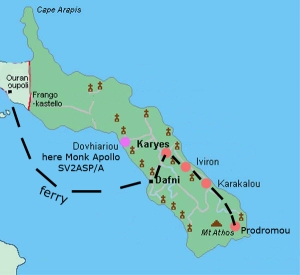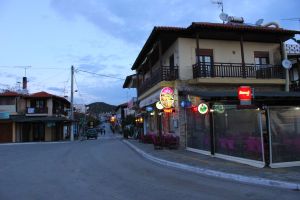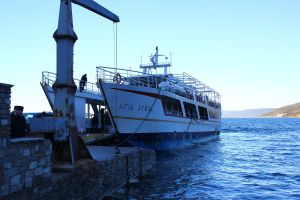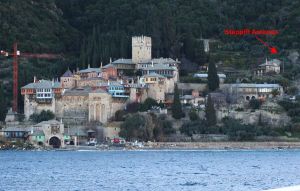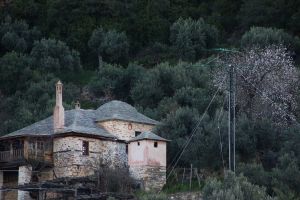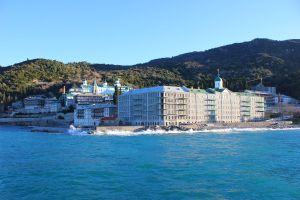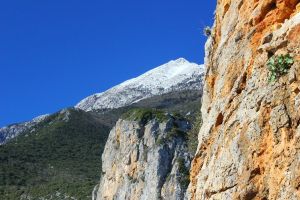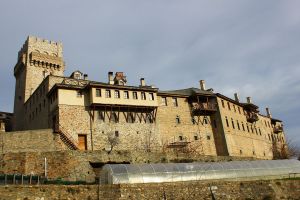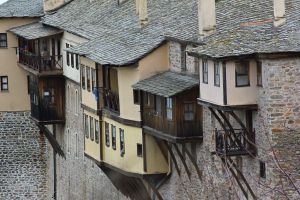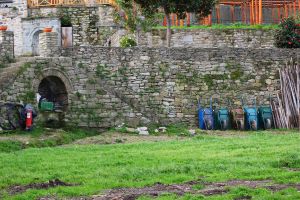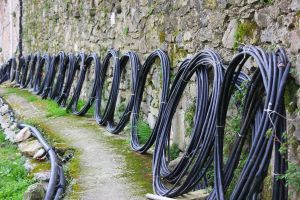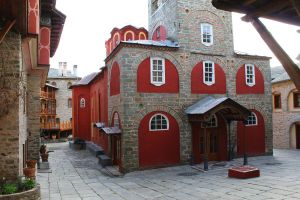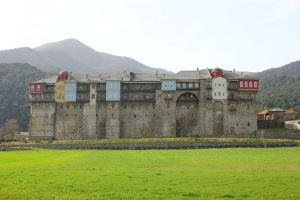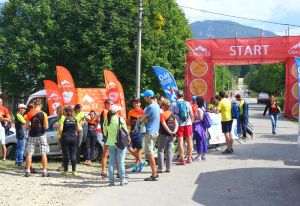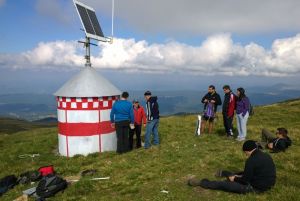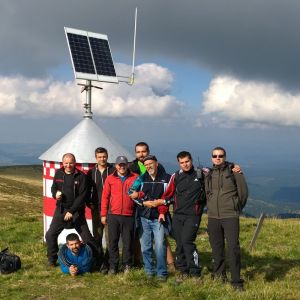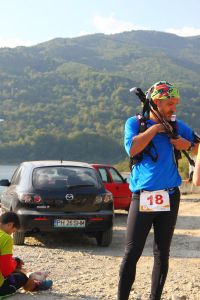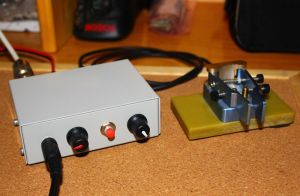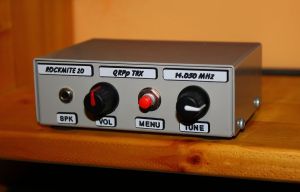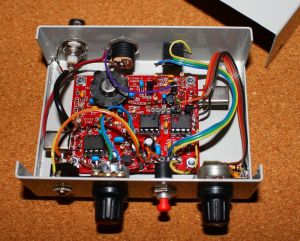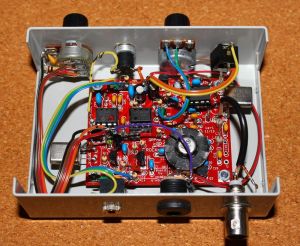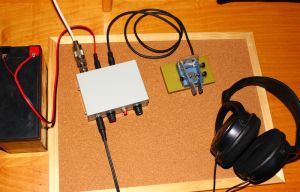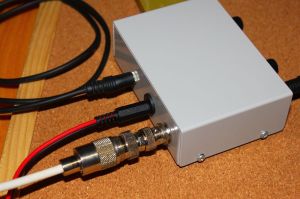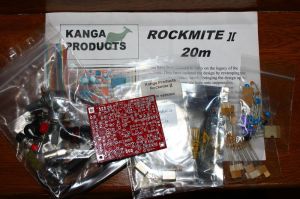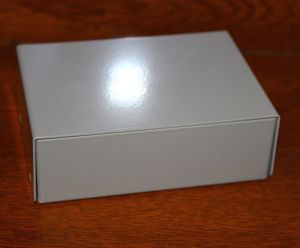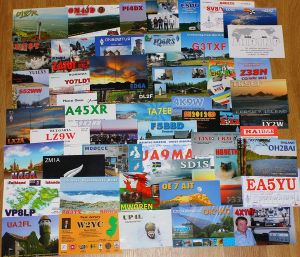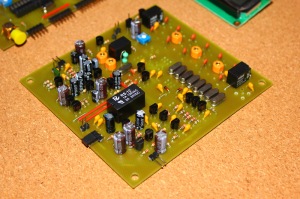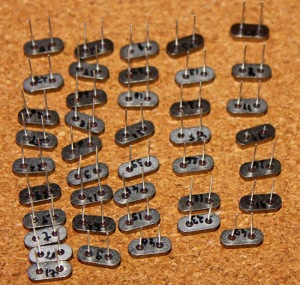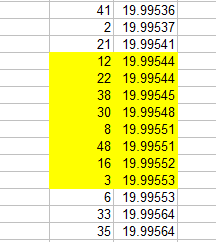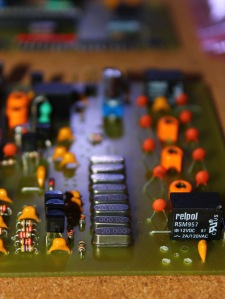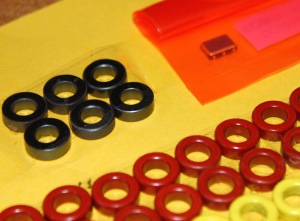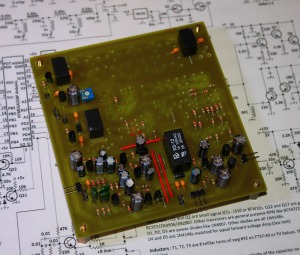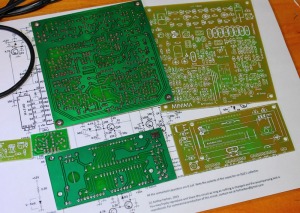Last weekend, 5th/6th of July, YO DX VHF/UHF Contest took place, along with other neighbour countries own VHF contests, so together with some fellow hams from our local club, YO4KAK, we went on a field-day trip to some close by hills, 35 km away, in Macin Mountains, which is also a World Flora & Fauna protected area, YOFF-009, Macin Mt. National Park.
I was having this trip in mind for several months, so a few weeks before, while surfing through the IARU VHF Calendar, I spotted this weekend that will be the best one to try out upper bands, since many nearby stations will be active for the contests. So it was! After a quick brief in my head, I sent an email to all of our club members proposing this trip. In the end we were five who decided to go, YO4SCY, YO4GNJ, YO4BEX, YO4CAI and myself.
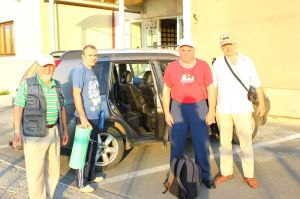
L to R, Geo – YO4BEX, Victor – YO4SCY, Marian – YO4GNJ, Valentin – YO4CAI
For the whole three weeks prior to the departure we made a lot of preparations: finding out what road will bring us close to the camping point, permits to camp in the park, testing generator set for noise in the transceiver, energy plan of the battery, what antennas to bring, what coax to bring, to bring a laptop or not to bring a laptop, critical stuff like canned beer vs bottled beer and so on. Eventually we managed to overkill the entire luggage space in the car with a lot of equipment.
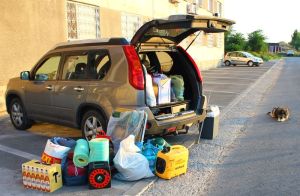
Victor YO4SCY/M
Initial plan was to conquer the highest peak, Tutuiatu, 467m, also a SOTA peak, YO/MM-001 and which has a very clear surrounding good for VHF. To go by feet is quite easy and relatively quick from the nearby village of Greci, about 1-2 hours, but not with that load we took. So we had to go by car, or at least as much close as possible.
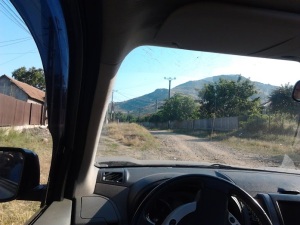
Tutuiatu Peak, 467m, seen from the Greci village
To get there it need a lot of detour through north. We had to get to the peak by the back of the mountains on a very heavy forest road, accessible only by tractors and off road cars. For some portions of the road, we passengers had to walk by feet, since the car’s exhaust was kicking the ground; four guys, almost 400 kilos is not negligible :). Unfortunately, Victor, YO4SCY, pushed his car to the limits up there, and ended up with serious paint scratches from the bushes.
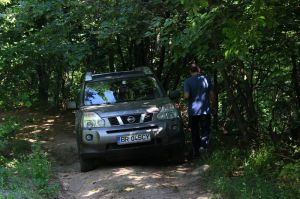
YO4SCY checking the road
Three hours have passed and we have got nowhere. Eventually we came up in a forest clearing, and it seemed like it was not in our direction and then I remembered this spot from last year when I was in a trekking trip. We let the mountain behind! Crap!
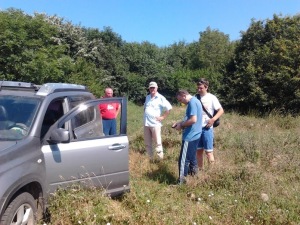
We were lost!
Of course, the best thing to do was to go back. For a couple of minutes we managed to find some gsm signal and we called a local ranger, but we couldn’t explain him where we are so he can direct us, the signal failed again and here we were again without any clue where to go.
Finally, after 2-300 meter on our way back, we found another ranger in the woods, and he showed us the way near the Tutuiatu peak. The road ended up in a small valley, with two mountains on each side.
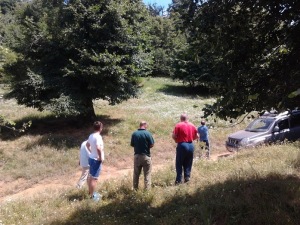
Left – Tutuiatu Peak, Right – Ghinaltu Peak
We were all very happy, and thirsty! that we finally made it, so quickly unpacked and went up to the peak (50-70 m distance). But when nearly reaching the tallest point, I decided to take a 5 seconds break to cool down, and when turning back, in all its splendor, I see Tutuiatu Peak on the other side! We were on the wrong mountain!
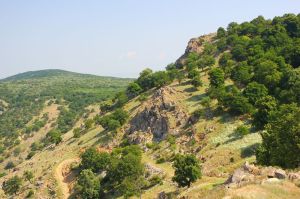
Tutuiatu Peak, 467m, seen from neighbour peak, Ghinaltu, 422m
After a quick debate we came to the conclusion that it will be difficult to climb there with all of our equipment, and after three ups and downs, five people, of carrying stuff from the car and back we set the camp here.
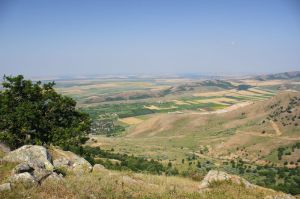
View from our camp, Ghinaltu Peak, 422m
We had the following radio equipment: IC-7000 running 100W on HF and 50W on 2m, wire dipole and 20m vertical antennas, F9FT 9 elements for 2m, 1kW generator and a 62Ah car battery and miscellaneous equipment.
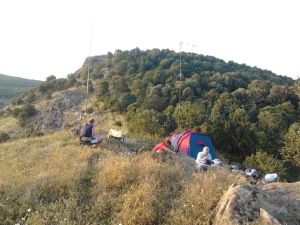
YO4KAK/p camp in YOFF-009
I also took my QRP portable pack with FT-817, Z817 tunner, vertical telescopic antenna for HF, 4 element DK7ZB for 144MHz and 6 elements DK7ZB for 432MHz, all antennas mounted on a 1 meter camera tripod.
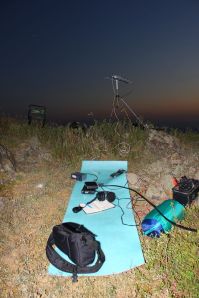
Operating on 70cm contest, with my FT-817 and 6 elements Yagi
We started working at about 1500 local time. First, YO4BEX worked for YO4KAK/p, in CW 20m and a few in 30 and 15m, for YOFF-009, reaching in two hours to about 95 QSOs.
At 1700, the contest started, so we changed to upper bands. The main station, YO4KAK/p, was working on 2m, and I was working with my callsign in 70cm, with 5W.
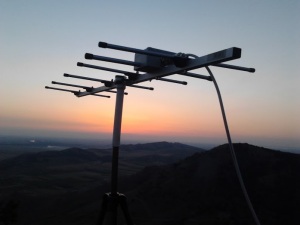
432MHz 6 el DK7ZB beaming West
I was really impressed about QSO-ing in 144 & 432 Mhz. For me it was the first time working CW and SSB in this bands and it is really a fantastic experience. In the end I was able to make 15 contacts on 70 cm and 24 in 2m. The longest DX was RK7K, 479km away, on both bands.
Further in the night, YO4KAK/p switched to HF again, working in Marconi Memorial Contest about 60 QSOs, counted also for YOFF-009.
At about midnight we went QRT, we packed the sensitive equipment in the tent and went sleeping. We barely managed to find a right place to put the tent. All the terrain was rocky and not straight. When I woke up in the morning I didn’t knew why my abdomen hurts, then I realized that I was so tired last night and that I put my sleeping bag on a rock and didn’t felt it during sleep 🙂
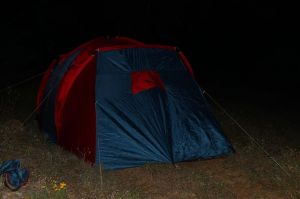
Camp in Macin Mountains
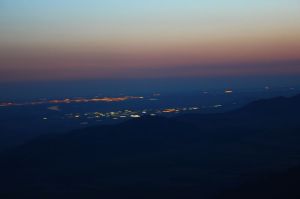
City of Braila and surrounding villages seen at night from the Ghinaltu peak, 422m
Morning came, so at about 0700 I turned the radio on in 144 Mhz and made a few QSOs. Few hours later, after breakfast, I switched to HF to work in YOFF-009. Luckily we barely had some mobile internet signal and could spot myself to the DX Cluster. Not more then 3-4 minutes passed away and the pile-up began. In about 35 minutes I managed to make 55 QSO in 20m SSB, running with only 5W and a vertical fish-pole antenna .
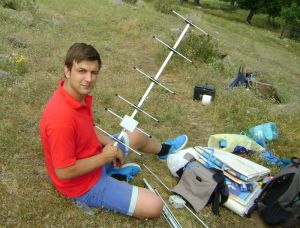
Mounting the 6 elements DK7ZB 432Mhz
At about noon we started to pack our stuff and headed our way home, of course on the same heavy forest road that took us here, planning to come back again next year, but in a much lighter way with big backpacks each of us and climbing up there only by feet.
All in one, it was a nice experience. I am happy to discover that 144 & 432 MHz are just as interesting as below 30MHz CW and SSB, and now I am looking further to upgrade, test and experiment new stuffs for this bands.
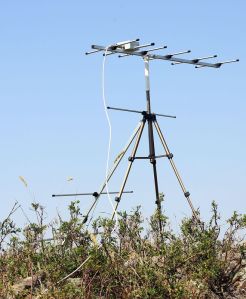
My portable QRP V/UHF antennas, 4/6 elements DK7ZB
In the upcoming weeks we plan to go to another nearby WFF protected area, YOFF-017, National Park of Danube’s Small Island, at about 25 km away from Braila, and camp overnight near the river of Danube. Hope to hear you then on the bands!
73s and QRP!



